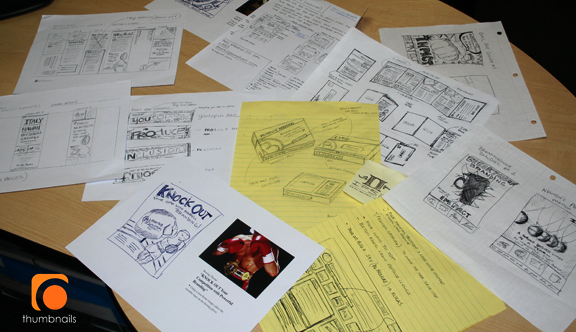![]()
The right approach to creative feedback can deepen relationships between makers and stakeholders and take a piece of work from good to great. The best feedback happens at the right moment, at the right level, and in the right way, and it allows a designer, filmmaker, writer or artist to move their work closer to your vision and align it with the needs of the market.
Too often clients take the wrong approach to assessing and commenting on creative work and react emotionally to what they’ve just seen. As a head of design, I’ve often had to coach clients through the process, helping them understand the importance of their feedback and how to change their subjective mindset into one that can focus more on their business needs.
Here are five key considerations before your next review that will ensure you help the creative team deliver exactly the right piece of content your business requires.
1. Be the voice of what matters most
In a creative review, it’s tempting to focus on the surface layer and discuss individual components. However, the best clients resist this urge and instead focus on measuring the presented work against the big problem to be solved. Effective clients use feedback to course-correct a draft by asking important questions at the deeper layer: What are we doing? Why are we doing it? Does this design or concept solve the problems most important to us and our customers? Feedback along these lines sparks creative solutions and forges real partnerships between creative and client.
 2. Lose your fear of the sketch stage
2. Lose your fear of the sketch stage
Many design techniques have evolved to steer client conversations away from unimportant parts of a project’s current phase. The use of “lorem ipsum” to prevent clients from providing feedback on placement copy is a classic example. (Though personally I prefer Cat Ipsum.) Many clients only like to see really fleshed-out work that bears a strong resemblance to what the final version will look like. But it’s worth reviewing early drafts, whether they’re hand-drawn concept sketches or greyscale wireframes because doing so can focus your attention on the crucial overall concept. It does take practice to understand these early-stage conceptual deliverables and to map your feedback accordingly. Work with your creative team to know what these rough drafts communicate and what they don’t.
3. Measure against pre-set goals
An effective way to stay true to what matters is to use a goals-based mindset instead of a nitpicky, critical or pedantic approach. (As an aside, these goals should be communicated to the creative team early in the project, but that is a topic for a separate post.) Consider the differences between these two statements:
• Bad: “I don’t like the blue”
• Good: “Based on what we know about the younger demographic we are hoping to attract, I think this treatment could feel more energetic and less corporate.”
The second statement is goals-based because it interprets a design through the lens of the larger purpose of the project. This approach helps the designer receiving the feedback open up possibilities for solutions instead of narrowing them.
4. Represent the target audience
Your creative team should never solicit feedback by asking, “Do you like it?” but if they do, then help them out by steering the conversation back to the important areas of the work. It’s not actually that important whether you, personally, really like it or not. When promoting a product or selling a service, you need to appeal to your target audience and that probably doesn’t include you. While you should definitely consider things from the perspective of your overall brand identity, don’t let personal preferences for or against certain ideas, colors, styles and words get in the way of a successful outcome.
5. Give yourself feedback on your feedback
As a client, you should continually work to become a better provider of feedback because this one skill can lead to better project results. It’s good practice to do a post-mortem of your review process and see where improvements could be made, especially if you plan on working with that creative team again. Spend some time after the end of your next project to understand the effectiveness of your feedback loop. Were your comments helpful? What could either party do better next time? These insights are sure to help your next collaboration run more smoothly.
Applying these five techniques will help you provide more meaningful feedback to your creative teams and ensure a better business outcome on your next project. I’d love to hear what you think of my approach and if you have any other insights to add so get in touch via Twitter or leave a comment below.




